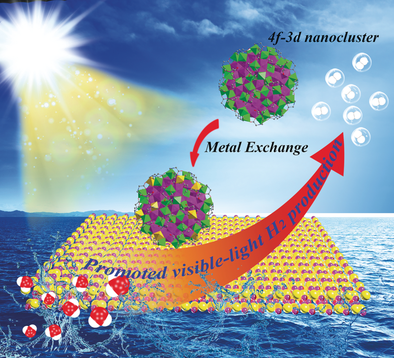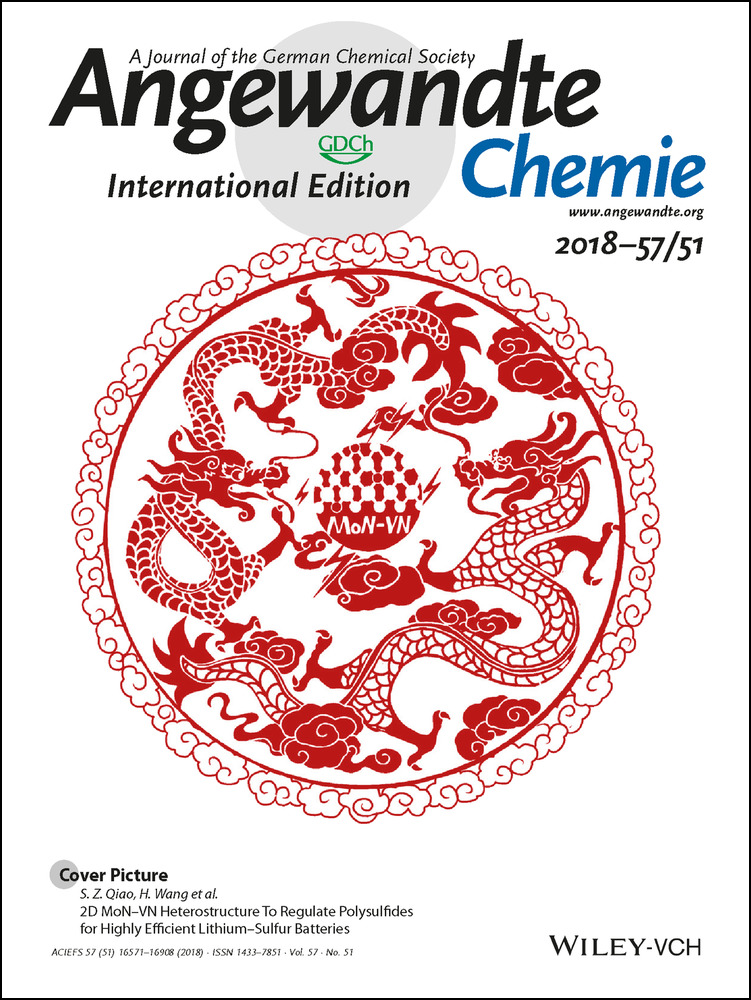Integration of Lanthanide–Transition-Metal Clusters onto CdS Surfaces for Photocatalytic Hydrogen Evolution
Graphical Abstract
Assembling lanthanide–transition-metal (4f–3d) clusters Ln52Ni56 (Ln=Eu, Pr, Nd and Gd) onto CdS composites achieved enhanced photocatalytic H2 production. Some Ni2+ ions in the clusters were exchanged by Cd2+ to form Ln52Ni56−xCdx/CdS composites. An Eu52Ni56−xCdx/CdS species shows the highest activity of 25 353 μmol h−1 g−1 and an apparent quantum efficiency of 42.4 %.
Abstract
Heterometallic lanthanide–transition-metal (4f–3d) clusters with well-defined crystal structures integrate multiple metal centers and provide a platform for achieving synergistic catalytic effects. Herein, we present a strategy for enhanced hydrogen evolution by loading atomically precise 4f–3d clusters Ln52Ni56 on a CdS photoabsorber surface. Interestingly, some Ni2+ ions in the clusters Ln52Ni56 were exchanged by the Cd2+ to form Ln52Ni56−xCdx/CdS composites. Photocatalytic studies show that the efficient synergistic multipath charge separation and transfer from CdS to the Eu52Ni56−xCdx cluster enable high visible-light-driven hydrogen evolution at 25 353 μmol h−1 g−1. This work provides the strategy to design highly active photocatalytic hydrogen evolution catalysts by assembling heterometallic 4f–3d clusters on semiconductor materials.





